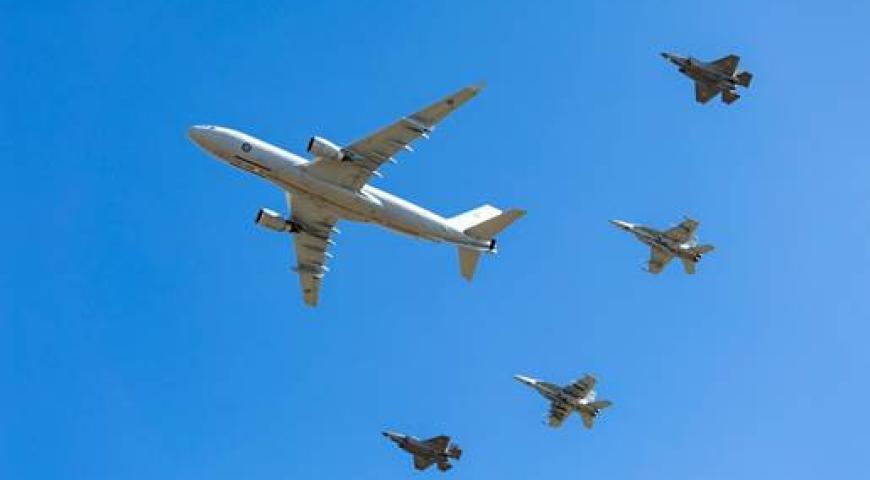It is widely accepted by coalition nations that conventional approaches to conflict are inadequate to sustain peace within a third-party state.1 To this end, militaries throughout the world have adopted missions that ‘advise and assist’ indigenous forces by passing on the requisite skills necessary to sustain security within the state. From the lessons learnt from the Philippines, Korea and Vietnam, it is apparent that the trained indigenous force has greater legitimacy than a foreign force that could be perceived as occupiers.2 This highly complex mission profile is routinely conducted by Special Forces (SF) units who, traditionally, are embedded within the indigenous partner force.3 In 2014, the paradigm changed when United States SF elements conducted advise and assist missions from a remote locality in Iraq.4
Deane-Peter Baker’s ethical assessment of US SF remote advise and assist missions states that, with the emphasis on ‘leveraging indigenous mass’, remote advise and assist (RAA) missions will likely become normative within coalition nations.5 Within the assessment, Baker highlights an ethically problematic by-product of RAA missions, being the production of ‘human drones’. This contention raises a possibility that indigenous partners may have their rational capacity sufficiently manipulated or obfuscated by the partner force, rendering them as a ‘mere means’ within the greater proxy war.6 Although there was significant evidence to suggest that the use of RAA missions were, when appropriately administered, ethically sound, the assessment bracketed its application to violent action.7 It is the purpose of this paper to expand on Baker’s assessment by applying the ethical challenges of RAA missions to partner forces supporting an indigenous nonviolent partner. Specifically, this paper weighs the ethical challenges of providing remote assistance, advice and training to nonviolent groups within an emerging conflict. Furthermore, it will analyse what ethical responsibilities are retained by the partner force if, as result of the assistance, the indigenous force is met with violent action.
To assess the strategic viability of providing RAA capabilities to nonviolent forces, it is imperative that an understanding of the intended outcomes of these actions are understood. Michael L. Gross, in The Ethics of Insurgency, states that the goal of nonviolent resistance “is to undermine the prevailing asymmetry of power and force a state to yield to an aggrieved group’s demands by threatening the state’s material interests and international image”.8 Another key aspect of the nonviolent campaign is to secure international support such as sympathetic media reporting, recognition, perceived legitimacy, assistance and, most importantly, military intervention.9 These outcomes are achieved through what Gross describes as ‘dilemma actions’ and ‘backfire’.20 However, as Baker also identified, there is scope for such a mission to be carried out ethically.21 In relation to partnering a nonviolent indigenous force with the aim of creating a backlash event, the following ethical guidance is offered.
During the initial consultation with the indigenous force, whether offered or requested, the partner force must explicitly convey the risk to the participants of creating a backlash event. As it is accepted that the partner force is providing RAA to orchestrate a violent conclusion, it is reasonable that they have also predicted a logical rate of escalation by the opposed force. Therefore, it is the partner’s responsibility to gain consent from the indigenous force, which is sufficiently informed of both the nonviolent and violent consequences the opposition can impose.22 Because the intended outcome is to solicit violent retaliation, the indigenous force must consent to provoke the response and endure significant casualties without resorting to violence themselves. To achieve this, the indigenous force actors must relinquish their right to self-protection. This point is supported by both Gross and Sharp, who argue that within a nonviolent context, any violent action taken against the opposed force can be construed as provocative and legitimise a retaliation.23 24 With this in mind, the partner force must explicitly convey the intended outcome differentiating between violent and deadly responses prior to consent being given. Although on the surface the premise of forgoing the right for self-protection seems dubious, it is contended that self-governing, rational persons retain the right to place themselves in mortal harm.25 Furthermore, to revisit the Kantian argument, it is evident that, as long as the partner force remains transparent, an informed indigenous force remains rationally autonomous and capable of assessing its involvement in accordance with its own reason.26 If these guidelines are adopted, it is argued that, through the premise of informed consent, RAA missions with the intent of causing backfire are ethically sound.27
There is sufficient evidence to support the contention that RAA missions in support of nonviolent indigenous forces can be conducted within an ethical framework. However, the argument must be annexed with a discussion regarding the enduring responsibilities of the partner force to the supported indigenous actors. This is because the supported force actively facilitates and provokes violent retribution and, paradoxically, the effectiveness of the resultant backlash is intertwined with the increasingly violent, brutal and murderous response.28 The issue of responsibility becomes increasingly important if the indigenous partner is actively suppressed prior to achieving backlash, or the backlash event fails to surpass the threshold to legitimise military intervention. Although it can be argued that each individual retained their ability to reason, and therefore retain responsibility for their actions, it does not relinquish the responsibility of the partner force to protect indigenous forces from morally unacceptable treatment.29 This becomes particularly relevant when, as a result of the RAA mission, the indigenous force is able to facilitate a level of violent retaliation that was unlikely to occur without the partner force’s intervention. A dissonance between ethical responsibility to the trained force and the inability to intervene militarily now exists. To reconcile this situation, it is proposed that partner forces should afford the indigenous force the same concessions and protections as a recruited soldier or contractor.30 This proposal, with the implication of ethical and moral responsibility in the event of a failed action, seeks to mitigate the argument of engaging in ‘riskless’ action as described by Paul Kahn.31 Furthermore, it provides the indigenous partners a level of reassurance that the foundation of the relationship is one of mutual benefit.
As Special Operations Command Central looks to increase its RAA capability, it is evident that it will remain an integral mission profile within Special Operations.32 Furthermore, as coalition forces set to consolidate RAA mission frameworks and look towards scaling them to larger conventional operations, an ‘ethical best practice’ must be included within operational doctrine. As it has been seen within the nonviolent context, the primary concern for ethical failure hinges on the partner force’s ability to remain transparent with its indigenous partner. To remain within the realms of ethical practice, the partner force must preserve the rational autonomy of those who forego the right of self-protection to facilitate the backlash. Additionally, it has been found that partner forces are ethically responsible and must make provisions regarding the security and safety of the indigenous force in the event that the campaign is not successful. Although connectivity through technological advancement makes the possibility of remote and virtual presence an attractive option, it is argued that only through the revisiting of Kant’s second formulation can it remain an ethically sound venture.
1SMARTnews. TAA2: The Military Engagement, Security Cooperation & Stability SMARTbook. Washington: The Lightning Press. 2019, p. 1-3
2Colonel Robert A. Snyder. Institutionalizing the Advise and Assist Mission. Strategy Research Project, Carlisle Barracks: US Army War College. 2011, p. 3-28
3 Snyder, 2011, p.4
4 Deane-Peter Baker. Special Operations Remote Advise and Assist: An Ethical Assesment. Essay, Canberra: University of New South Wales. 2019, p 2
5Baker, 2019, p.2
6 Baker, 2019, p. 8
7Baker, 2019, p. 8
8Michael L Gross. The Ethics of Insurgency: A Critical Guide to Just Guerilla Warfare. New York: Cambridge University Press. 2015, p. 242
1 Gross, 2015, p. 244-245
10 Gross, 2015, p. 244
11 John A Gould, and Edward Moe. "Beyond Rational Choice: Ideational Assault and the use of Delegitimation Frames in Nonviolent Revolutionary Movements." In Research in Social Movements, Conflict and Change, 123-151. Colorado: BePress. 2012, p.141
12 Gross, 2015, p 242-248
13 Ibid.
14 Ibid.
15 Ibid.
16Stanford University. 2016. Stanford Encyclopedia of Philosophy. May 3. Accessed December 30, 2019. https://plato.stanford.edu/entries
17 Michael Walzer. Just and Unjust wars: A Moral Argument with Historical Illustrations. 5th. New York: Basic Books. 2015, p. 107
18 Gross, 2015, 241
19 Baker, 2019, p. 8
20 Immanuel Kant. Groundwork of the Metaphysics of Morals. Translated by J. Paton. New York: HarperCollins. 1785
21 Baker, 2019, p. 8
22 Gross, 2015, p. 249
23 Gross, 2015, p. 252
24 Sharp, G. The Politics of Nonviolent Action. Boston: Porter Sargent. 1973, p. 677
25 Michael L. Gross. "Backfire: The Dark Side of Nonviolent Resistance." Ethics and International Affairs. 2018, 317-328.
26 Kant, 1785
27 Ibid
28 Gross, 2018, p. 324
29 Walzer, 2015, p. 107
30 Gross, 2015, p. 250
31 Paul W Kahn. The Paradox of Riskless Warfare. Faculty Scholarship series 326, Yale: Yale Law School. 2002, p. 1-8
32 Christopher Thielenhaus, Pat Traeger, and Eric Roles. 2016. "Reaching Forward in the War Against Islamic State." PRISM 6 (3): 97-106.
Social Mastery
Please let us know if you have discovered an issue with the content on this page.
Comments
Start the conversation by sharing your thoughts! Please login to comment. If you don't yet have an account registration is quick and easy.




